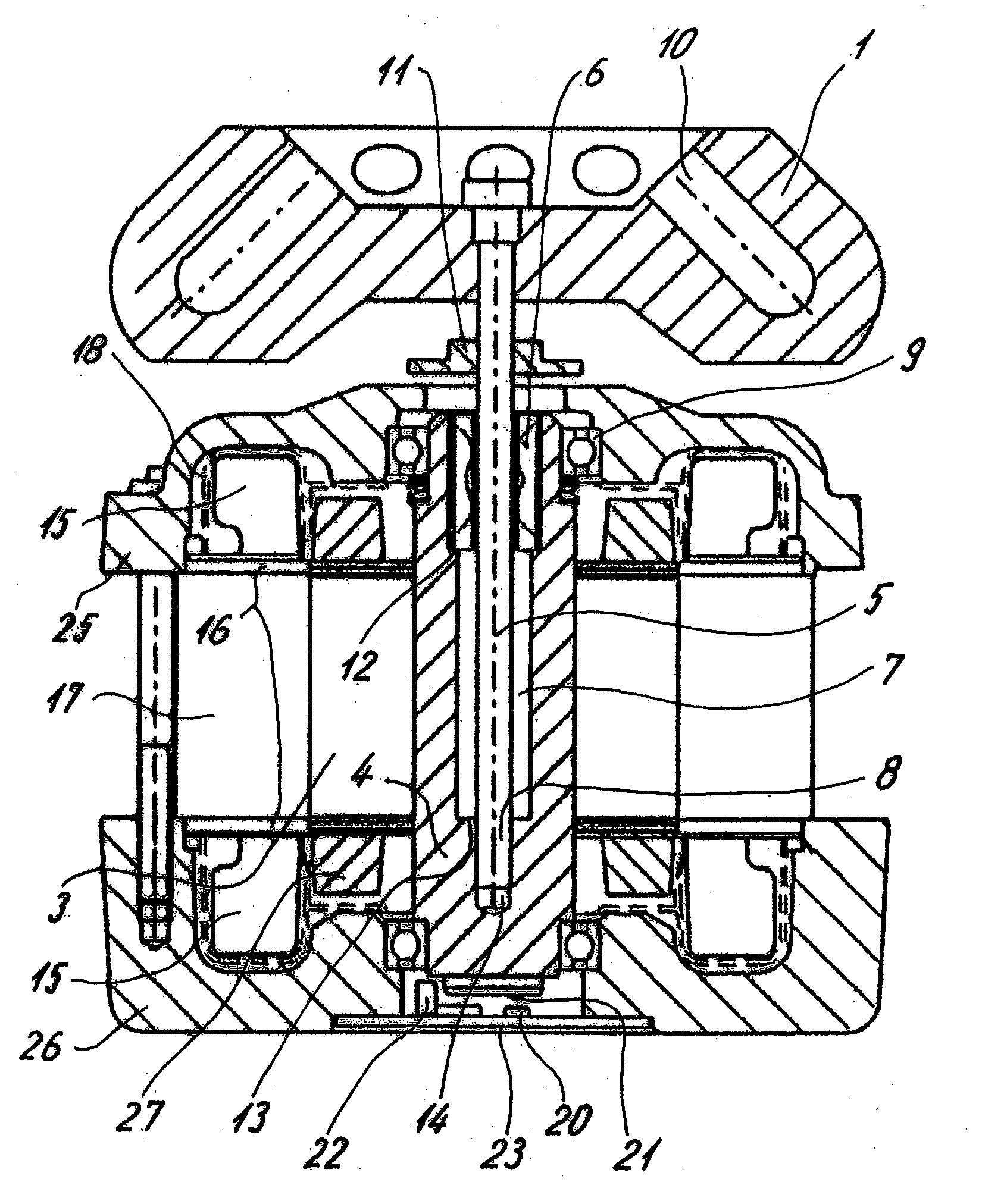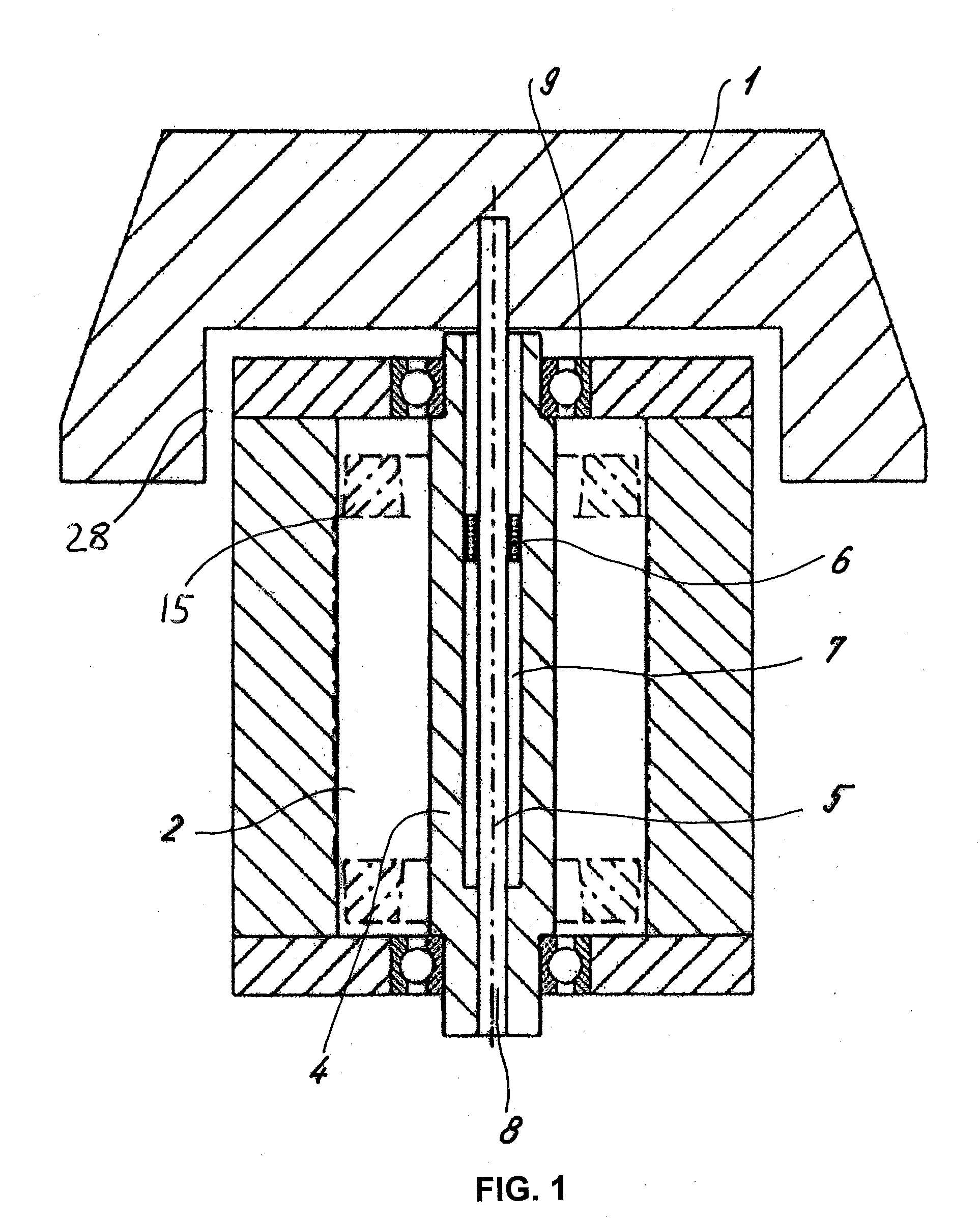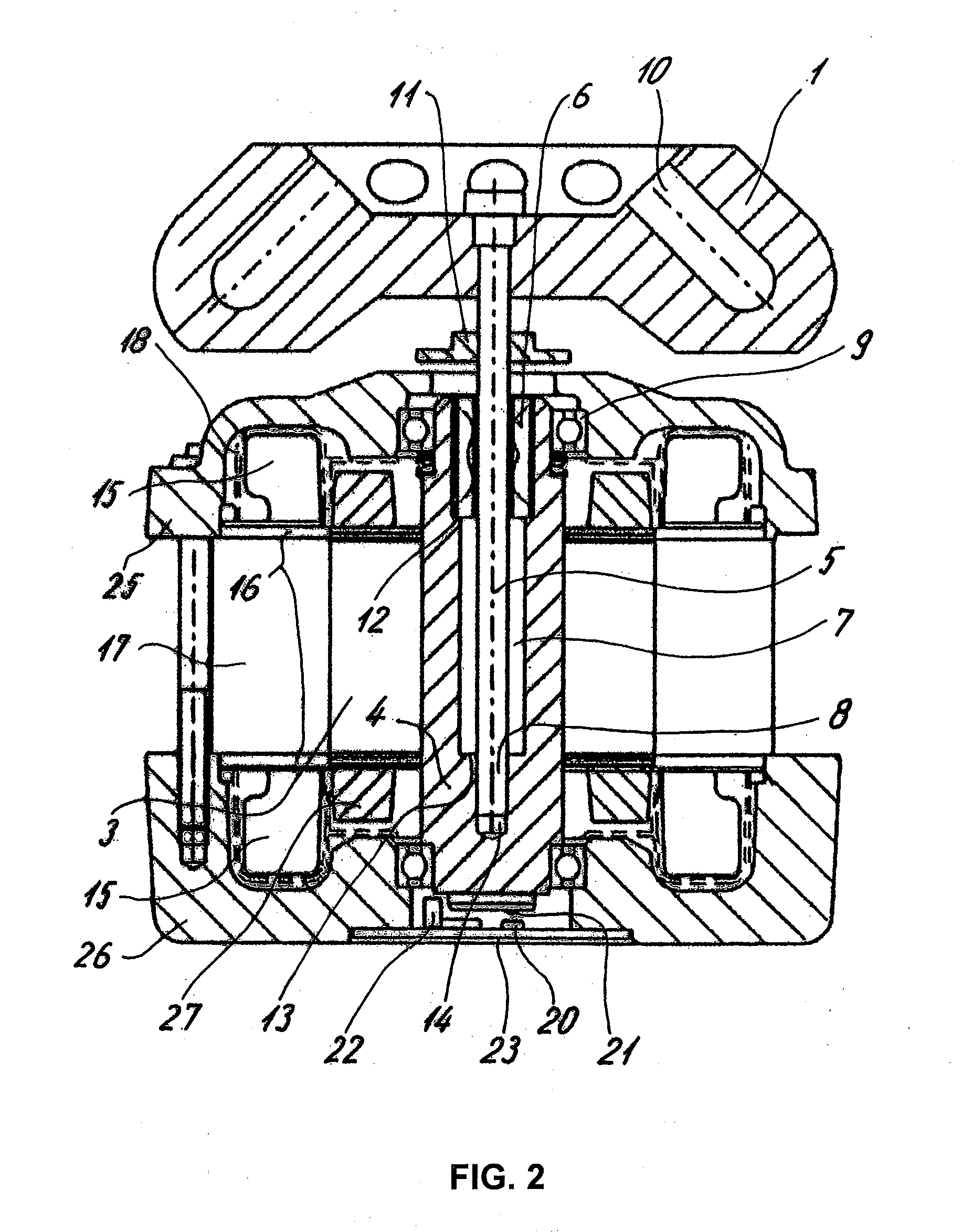Drive unit for a laboratory centrifuge
a technology for laboratory centrifuges and drive units, which is applied in the direction of centrifuges, dynamo-electric machines, electrical apparatuses, etc., can solve the problems of unsuitable small centrifuges, unsuitable operating apparatuses, and unsuitable operating apparatuses, etc., to achieve safe and reliable separation, facilitate a particularly compact motor structure, and good damping
- Summary
- Abstract
- Description
- Claims
- Application Information
AI Technical Summary
Benefits of technology
Problems solved by technology
Method used
Image
Examples
Embodiment Construction
[0023]A laboratory centrifuge comprises a centrifuge rotor 1 in which samples can be disposed. The centrifuge rotor 1 is driven by a motor 2 which is shown only schematically in FIG. 1, which motor is disposed in a housing 3, shown in FIG. 2. The motor 2 drives a shaft, which may be a simple conventional solid shaft.
[0024]The drive unit and rotor for the laboratory centrifuge provide a compact structure, especially because an upper portion of a motor housing 3, and, preferably, an upper portion of a motor 2, e.g., at least a portion of the upper winding 15, is placed in a recess 28 of the centrifuge rotor. That is, for a centrifuge with vertical shaft, the upper end of the motor housing, preferably the upper end of the motor, is positioned higher than the lower end of the centrifuge rotor
[0025]In a more advanced design, the shaft may be a hollow shaft 4 which accommodates and holds inside it an inner shaft 5 of a lesser diameter. One end region 8 of the shaft 5 is disposed in a pres...
PUM
 Login to View More
Login to View More Abstract
Description
Claims
Application Information
 Login to View More
Login to View More - R&D
- Intellectual Property
- Life Sciences
- Materials
- Tech Scout
- Unparalleled Data Quality
- Higher Quality Content
- 60% Fewer Hallucinations
Browse by: Latest US Patents, China's latest patents, Technical Efficacy Thesaurus, Application Domain, Technology Topic, Popular Technical Reports.
© 2025 PatSnap. All rights reserved.Legal|Privacy policy|Modern Slavery Act Transparency Statement|Sitemap|About US| Contact US: help@patsnap.com



